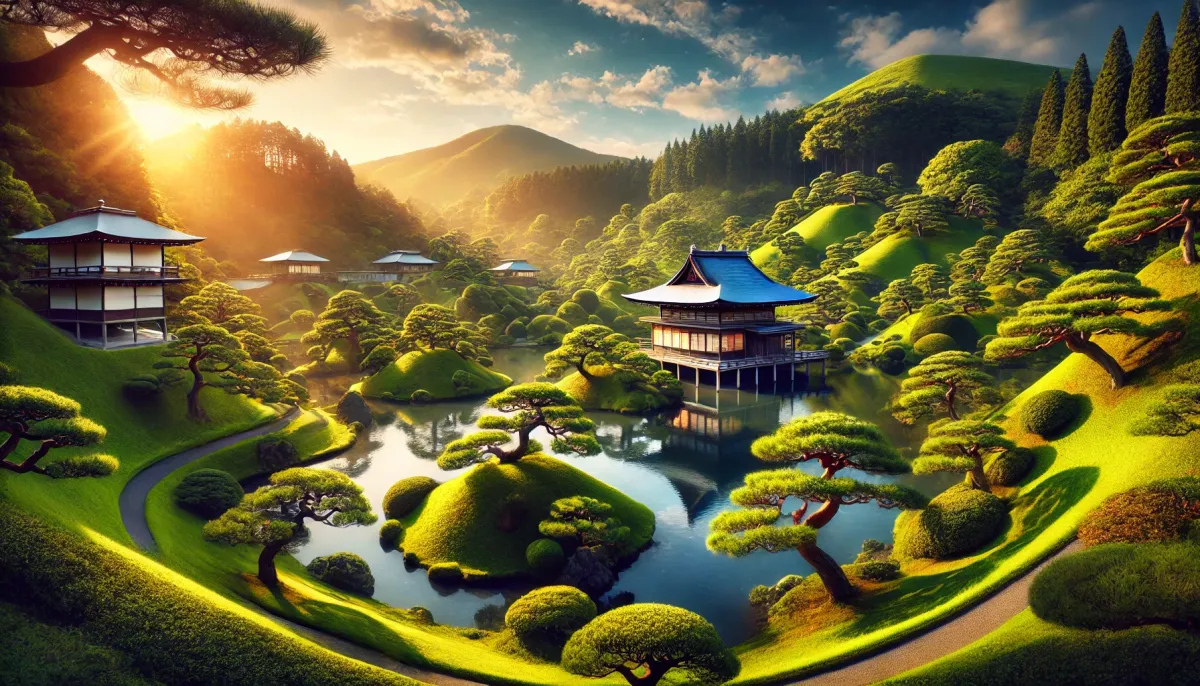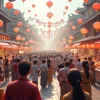Hi everyone, Mark here! As a seasoned backpacker with a passion for Asian travel, I'm thrilled to share my recent adventures in Kumamoto, Japan. This trip wasn't your typical whirlwind tour; it was a deep dive into the rich history and unique culture that makes Japan so captivating. Get ready to explore some hidden gems alongside me!
Suizenji Jojuen Garden: A Peaceful Oasis of History
Our journey began at Suizenji Jojuen Garden, a stunning example of traditional Japanese garden design. The unique aspect of Japanese gardens, as I often explain, lies in their reflection of a distinct cultural identity. While we might appreciate Japan's modern infrastructure, cleanliness, and exceptional service, the deeper cultural nuances can be more challenging to grasp for a first-time visitor.
Suizenji Jojuen, established in 1636 during the Kan'ei era, offers a captivating glimpse into this history. Just trying to understand the Japanese dating system, with its eras and emperors, can be a bit mind-boggling for a Westerner. It's akin to Americans trying to immediately grasp the complexities of the Chinese dynasties or even the significance of specific years within the Republic of China era.
The garden itself, commissioned by the feudal lord Hosokawa Tadatoshi, initially served as a place for hosting guests and enjoying tea ceremonies. This speaks volumes about the Japanese emphasis on ritual and professionalism. Every aspect, from the tea ceremony to flower arranging (Ikebana), is approached with meticulous precision and dedication. This dedication is sometimes perceived as excessive formality, or even nitpicking, but it's this very attention to detail that has contributed to the high quality and global popularity of Japanese products.
Doing business with the Japanese demands a similar level of precision. Their thorough assessment process, with its multiple reviews and testing phases, underscores their rigorous approach. This commitment to excellence has, however, sometimes caused Japan to lag behind in adopting rapid changes and keeping pace with global trends. Their meticulous approach, while ensuring quality, can sometimes slow down processes in this fast-paced, technology-driven world. This explains the challenges Japan faces in certain industries, where South Korea, for example, has sometimes overtaken them due to a quicker adaptation to technological innovations.
Suizenji Jojuen Garden, covering approximately 70,000 square meters, is a stunning example of this blend of history and aesthetic. Its design, inspired by the East Sea Road (Tokaido) with its 53 stations, captures a smaller version of the landscapes travelers would've seen between Edo (Tokyo) and Kyoto during that time. Unless you have a strong understanding of Japanese history, much of this depth might easily go unnoticed, sadly, this is often the case with many tourists in general. It's similar to visiting China and expecting to grasp 5,000 years of history in one trip!
Beyond the Castle Walls: Kumamoto's Shopping and Culinary Delights
Beyond the historical sites, Kumamoto offers a vibrant shopping scene. Near Kumamoto Castle, you'll find Sakura Machi, a charming street filled with shops, restaurants, and local delicacies. My recommendation is to explore at your own pace, indulging in some souvenir shopping and local treats – a far cry from the pressured shopping experiences some tourists encounter. I particularly enjoyed trying the tofu products from Gokokuya Honpo, a renowned local producer.
A Deep Dive into History: Hitoyoshi Castle Ruins and Aoi Aso Shrine
Our journey took us beyond Kumamoto city, to explore the Hitoyoshi Castle ruins, a medieval castle with a unique history spanning over 700 years. The castle's construction methods, especially the moats and protective bridges, highlight different approaches to castle building over the centuries. It isn't just about history buffs either; the architectural styles alone are incredibly interesting and captivating for anyone who appreciates history and design.
This is further enhanced by the discovery of a unique moon-shaped stone, which gave the castle its alternate name, Tsukiyo Castle. The castle's yearly cherry blossom display makes for a stunning spectacle.
Next, we visited Aoi Aso Shrine, a national treasure dating back to 806 AD. Its five structures – the gate, the hall of worship, the hall of offerings, the corridor, and the main sanctuary – represent the peak of architectural achievements in Kyushu. The shrine's design, including its steeply pitched thatched roof and detailed carvings, reflects the architectural styles of its time. Its significance is further enhanced by the fact that the tree depicted on the Japanese one-yen coin was inspired by a tree at the shrine's entrance. The meticulous craftsmanship and cultural significance were palpable. The use of thatched roofing, a challenging material to maintain, only adds to the shrine's unique charm. This makes sense, especially as the upkeep of thatched roofs is laborious and costly. We even fed the koi fish in the pond, using the coin-operated feeders provided.
Reflections on Modern Japan: Currency and Consumer Habits
One surprising aspect of our trip touched upon the dwindling production of the one-yen coin in Japan. The cost of producing these coins has exceeded their face value, and the increasing prevalence of electronic payments has further reduced demand. This reflects a larger shift in modern Japanese society and consumer behavior. The changing economic and lifestyle aspects are intriguing, which further underlines that the transition from cash to digital payments is a global phenomenon. While many still prefer bank transfers, especially for large sums, the reduction of physical money in society certainly makes the observation very insightful.
Our Stay at the Kyocera Resort: A Luxurious End to Our Journey
Our trip concluded with a luxurious stay at the Kyocera Resort, a fitting end to a memorable journey through Kumamoto's historical and cultural treasures.
Table: Key Locations and Highlights of My Kumamoto Trip
| Location | Description | Highlights |
|---|---|---|
| Suizenji Jojuen Garden | Traditional Japanese garden | Historical significance, meticulous design, peaceful atmosphere |
| Sakura Machi | Shopping street near Kumamoto Castle | Local shops, restaurants, and unique Kumamoto products |
| Hitoyoshi Castle Ruins | Medieval castle ruins | Unique architectural features, historical significance, annual cherry blossoms |
| Aoi Aso Shrine | National treasure, dating back to 806 AD | Stunning architecture, historical significance, inspiration for the one-yen coin |
| Kyocera Resort | Luxury resort hotel | Comfortable accommodation and luxurious amenities |







